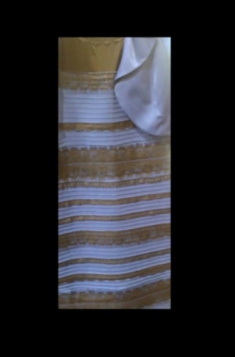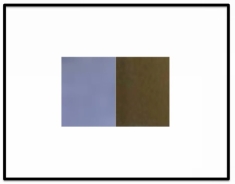Why We See #TheDress in Different Colors
By now you've probably seen the infamous picture of the dress that divided the internet last night. Do you see white and gold? Or blue and black?
Before you accuse anyone who disagrees with you of being color-blind, read Psychology Professor Alan Gilchrist's explanation of why some of us see one thing and the rest see something else:
"The dress phenomenon involves something called anchoring," he said. "The brightest part of a scene is automatically seen as white and this serves as the standard to which darker surfaces are compared. The question is, what is meant by “the brightest part” in this photo, the brightest part of the dress, or the brightest part of the photo? If the bright background is removed, the dress will appear white and gold, because the lighter part of the dress will become the white anchor. Some people can mentally remove the background and see it this way. Other people focus on the relationship between the dress and the background. The background is seen as bright white. Relative to this anchor, the lighter part of the dress appears blue and the darker part appears near black."

Here are two images that illustrate these two ways of seeing. In the first image, the background of the dress has been removed and replaced by black. Here people will see the dress as white and gold.
In the second image, a representative sample of the lighter and darker parts of the dress are surrounded by a background taken from the brightest part of the photo. Here the two colors tend to appear blue and black.

Dr. Alan Gilchrist studies visual perception, especially the perception of surface color, and especially the black-white dimension. Vision is known to be based on the image projected onto the retina, but the problem of how to assign black, white and gray values to surfaces represented in that image remains unsolved, in human vision as in computer vision. Because of variations in many factors such as the background of a surface and the lighting conditions, the perception of any one specific surface color can be associated with many patterns of local stimulation at the retina.


